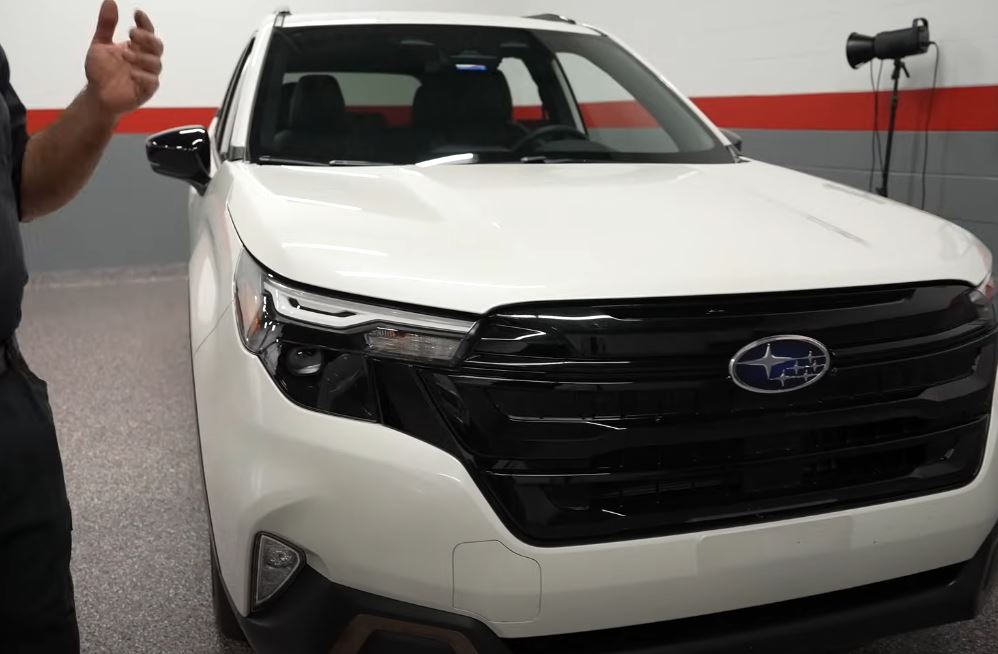
The Subaru Forester has developed over the last 20 years with the steadiness of a reliable manual, outlasting many of its predecessors without ever trying to take the lead in the market. Subaru has cultivated a legacy that is remarkably similar to how an experienced hiker selects equipment: robust, dependable, and prepared for the unexpected. This is achieved by honing core values like dependability, space, and all-weather confidence.
The 2025 Forester is a modern classic, built on a reputation forged in rally heritage but shaped by outdoor lifestyles and family needs. Offering a package that is remarkably effective at handling real-life scenarios, it may not shout from showroom billboards like trendier competitors, but it speaks volumes in subtle, reassuring tones.
Subaru Forester 2025: Key Highlights
| Category | Details |
|---|---|
| Manufacturer | Subaru Corporation |
| Class | Compact Crossover SUV |
| Launch Year | 1997 (First Gen), 2025 (Sixth Gen Revamp) |
| Engine | 2.0L e-Boxer mild hybrid petrol engine (134 bhp) |
| Transmission | CVT automatic with artificial gear simulation |
| Drivetrain | Standard Symmetrical All-Wheel Drive |
| Fuel Economy | Approx. 34.9 mpg (EPA est.) |
| Boot Space | 508 liters |
| Price (U.S. Market) | Starting from $29,995 USD |
Subaru gives the Forester a very distinct personality by emphasizing driving assurance and streamlining the design. This makes it incredibly appealing to people who prioritize utility over flash.
The boxy silhouette of the new Forester is intentional, not by accident. This squared-off posture results in noticeably better visibility, especially when navigating narrow city streets or winding country roads covered in snow. Subaru produces a sense of panoramic control by highlighting thinner pillars and lower dashboard lines, which is surprisingly uncommon among contemporary SUVs.
A screen that reacts instantly, buttons where you need them, and seats made for comfort rather than showroom appeal are all examples of how the interior design language reflects the philosophy. It is akin to entering a house where everything is thoughtfully placed and not merely ornamental.
The Forester seamlessly transitions from city commuter to trail companion by incorporating X-Mode terrain response and 220mm of ground clearance.
It’s not an adrenaline junkie in terms of performance, and that’s okay. Although the 2.0L mild-hybrid e-Boxer engine doesn’t promise lightning-fast speeds, it behaves consistently and has very good off-road skills. Subtly, the CVT—which is frequently criticized elsewhere—has been adjusted to simulate gear shifts. It’s quieter and more collected than previous iterations, but it still sings louder than some would prefer when accelerated.
Crucially, the all-wheel-drive system provides an inherent sense of security that only seasoned Subaru owners can truly value. The Forester becomes an anchor in severe weather. Unexpected downpours, rutted gravel pathways, and slippery driveways are all managed with a truly reassuring ease.
The cabin has a special advantage for families: every square inch feels useful.
The nearly 90-degree rear door openings make access nearly effortless, whether you’re putting in a car seat or assisting a grandparent into the back row. Three passengers can be comfortably accommodated by the wide rear bench and flat floor, something competitors frequently promise but rarely deliver. There is a thoughtful distribution of storage options throughout the cabin, including wireless phone trays, large door bins, and dual cupholders.
Although the boot space isn’t the best in its class on paper, it is incredibly useful in real-world situations. A wide aperture and low load lip make it surprisingly simple to get big objects in and out.
The Forester is not inexpensive, but its long-term dependability makes up for it.
With a starting price of just under $30,000, it feels like an ambitious entry into the market compared to more reasonably priced competitors. Nonetheless, it comes equipped with a number of features that rivals typically save for higher-end models, such as Subaru’s EyeSight® driver assistance suite, 360-degree cameras, and complete smartphone integration.
Fuel efficiency is lacking, especially in contrast to more recent full-hybrid models from Toyota or Kia. However, it makes up for this by providing durability that lasts far past the initial ownership cycle. An industry-record 96% of Foresters sold in the last ten years are still in use, which speaks to the vehicle’s remarkably sturdy construction.
The Forester’s hidden strength is that it’s not for everyone.
The Forester remains grounded in a time when the majority of automobiles follow trends like overzealous influencers. It’s designed to handle life’s messier situations, whether it’s an impromptu road trip, a muddy soccer practice pickup, or a grueling winter commute. It’s not meant to make people gasp.
Loyal drivers are more likely to stick with the Forester. It is not necessary to sell them every few years. When the time comes, usually after ten or more years of hassle-free driving, they just upgrade. Brand intimacy like that is extremely uncommon, but it works remarkably well for Subaru’s mission.
FAQs About the Forester Car
Is the Subaru Forester a Japanese car?
Yes, it is manufactured by Subaru Corporation in Japan.
What is the starting price of the Forester in the U.S.?
The 2025 model starts at approximately $29,995 USD.
Is Forester all-wheel drive?
Yes, all trims come with Subaru’s standard Symmetrical AWD system.
What is the fuel average of the 2025 Forester?
It offers around 34.9 miles per gallon, lower than some hybrid rivals.
Is Subaru Forester available in Pakistan?
Yes, it’s available through select import dealers at an estimated PKR 11.2 million.

